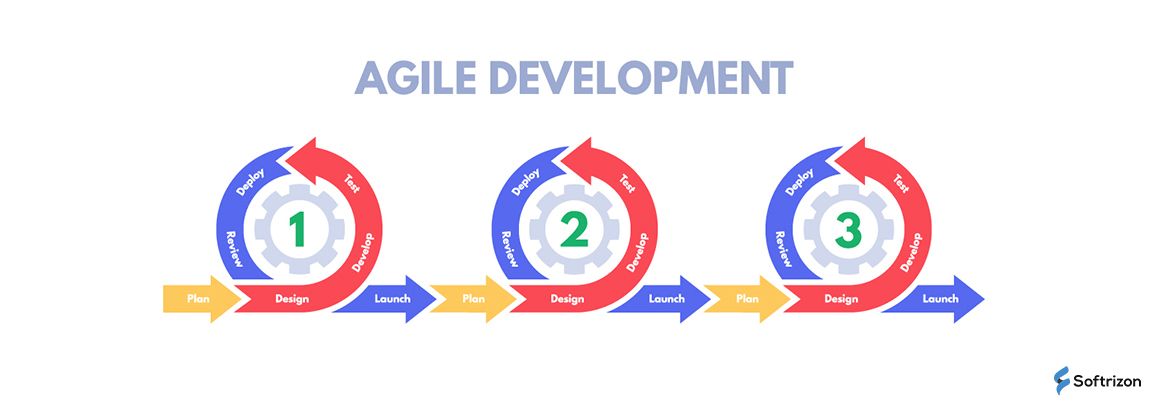Once, your customers had few options when it came to solving their needs. Today, that’s not the case. The chances are good that your software or app is just one of many vying for their attention. You want to stand out from the crowd for all the right reasons, and that means paying attention to user interface (UI) design and delivering the optimum user experience (UX).
Of course, creating a winning UI-UX design is easier said than done. In this post, we’ll explore UI and UX, why they matter, and what you need to do to ensure that you’re beating the competition.
What Is UI?
UI stands for user interface, and it includes the visual and functional elements that someone using your app or software will encounter. That applies to things like your login screen, your navigation structure, the graphics used, the controls for tools/functions within the app, and more.
What Is UX?
UX stands for user experience, which is a bit harder to define than UI but directly related to it. It’s a measure of every interaction a user has with your software, but also with your brand overall. So, UX applies to the login process and completing steps within the app/software, but it also touches on things like navigating your website or contacting customer service.
Join other businesses to get the latest insights from Softrizon delivered right to your inbox.
Are UI and UX Different?
In a word, yes, they are different. However, user experience and your user interface are directly related. Your user interface is the look and feel of the app or website, whereas the user experience is a measurement of how a user moves through that environment and how they feel about it.
Why Does UI/UX Design Matter?
Let’s start with the basics. Why should you care about good UI/UX design? Simply put, if your users don’t have a positive experience when using your software or app, they’re unlikely to continue to do so.
There’s no reason they should struggle through unintuitive controls or deal with laggy performance when they could just invest in a different app or software platform. In short, UI/UX design matters because it’s easier than ever for consumers and business users to find something that offers them a better overall experience that functions the way they want.
Let’s translate that into something a bit more concrete than user sentiment. Today, every dollar invested in UX delivers $100 in return. That means any effort to improve your overall user experience delivers a return of almost 10,000%. In fact, 70% of CEOs say that user experience is a primary competitive differentiator and is essential to attract, convert, and retain their target audience.
Now that we have a better understanding of the importance of good UI/UX design let’s delve into what it is and how you can work to improve yours.
Understanding UI/UX Design
UX design is nothing more than managing the way your target audience interacts with the elements your brand owns, like your website, an app, or even a product you manufacture. It’s about changing your mindset from designing for the aesthetic to designing for the experience.
Seven specific elements go into how a customer perceives an app, product, or other branded asset. They’re usually arranged in what’s called a user experience honeycomb and are as follows:
- Credible
- Desirable
- Usable
- Valuable
- Accessible
- Findable
- Useful
To drill down into your UI/UX design and begin making the necessary changes to deliver a positive experience, it’s important to answer some questions. These can be applied to every aspect of your brand and customer interaction, from opening that new app you just launched to visiting your corporate website.
How useful is it?
Does your app, product, or service solve a problem or answer a need your customers have? If it does not, then it’s not useful.
How desirable is it?
Is the product or software aesthetically pleasing? Does it offer the right visual experience? Is it tied to your brand’s character?
How findable is it?
How easily can your users find or access the site, app, or function? How many hoops must they jump through?
How usable is it?
How easily can your target audience do what they need to accomplish? How many clicks or taps are necessary? How many menu levels must they navigate?
How accessible is it?
Can everyone in your target audience experience the product/app/website the same way? Have you taken steps to ensure accessibility for everyone?
How credible is it?
Credibility equates to trust, and building it requires things like online reviews (social proof), as well as high-quality design and your overall company reputation.
How valuable is it?
The value of an app, website, product, or other business asset is a mix of the previous six considerations we’ve discussed.
Good UX Design
Great UX design is challenging, even for Fortune 500 companies. That’s because it’s not something you can assign to a dev team. Instead, it’s the result of an organization’s vision, mission, and ability to speak to its audience. However, you can begin making strides in the right direction by defining the problem you are solving for your customers/users, who your target audience is, and then creating streamlined ways to bring the two together.
The Need to Manage the User Experience
You cannot leave the user experience to chance. Instead, you’ll need to manage it, at least as far as possible. Several steps and tactics can help here.
- Get to know user behavior and pain points so you can design around them.
- Identify user personas and map out the user journey.
- Conduct a UX audit to identify areas in need of attention/revamping.
- Define your project requirements.
- Create and then use a wireframe.
- Create a user interface that offers the right aesthetics, but don’t neglect functionality and flow.
- Develop a prototype that allows stakeholders to give their input.
- Test, test, and test again with real users.
The Takeaway
In the end, UI and UX are inextricably linked, and they are critical considerations when it comes to your success. You must design with users in mind and ensure that their experience is as positive as possible. Please, put them in control, make it comfortable for them to interact with your app or product, reduce the number of decisions they have to make, and ensure your UI is consistent across all touchpoints.




